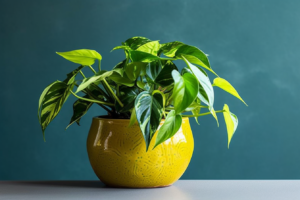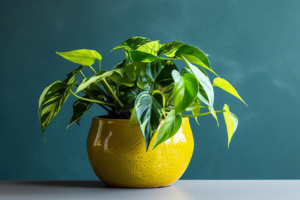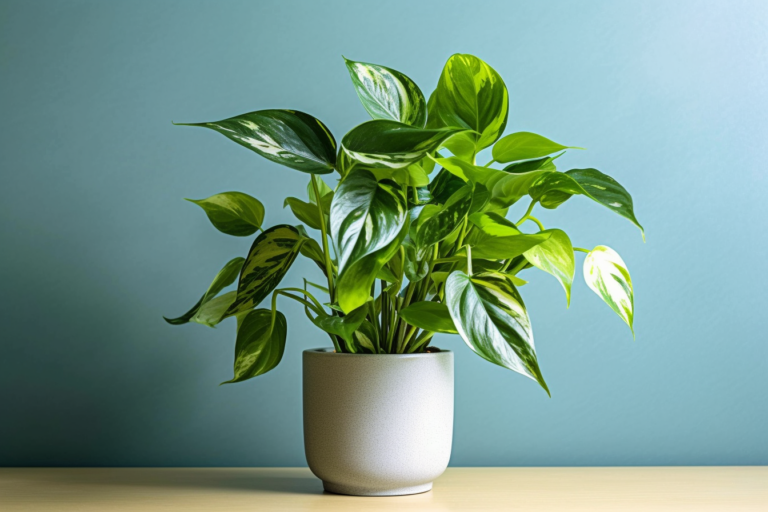Have you ever wondered, “How often should I water my pothos plant?” As one of the most popular and easy-to-care-for houseplants, pothos can bring beauty and life to your home or office. But proper watering is crucial to its health and growth. In this comprehensive guide, we will delve into the topic of how often to water pothos plants, factors that affect watering frequency, and how to keep your pothos thriving.
Understanding Pothos Plant
Pothos, also known as Epipremnum aureum or Devil’s Ivy, is a fast-growing, low-maintenance houseplant that can adapt to a variety of conditions. Its heart-shaped leaves and trailing vines make it a popular choice for hanging baskets or pots. This resilient plant is not only beautiful but also helps purify the air in your space.
Ideal Watering Conditions for Pothos
Pothos plants prefer well-draining soil, allowing excess water to escape quickly. This helps prevent root rot, a common issue caused by over-watering. A well-draining potting mix typically includes peat moss, perlite, and vermiculite. Make sure to choose a pot with drainage holes to avoid waterlogging the soil.
How Often to Water Pothos
In general, you should water your pothos plant every 7 to 10 days. However, this can vary depending on factors like light, temperature, and humidity. The key is to allow the top inch or two of soil to dry out between waterings. This prevents over-watering and encourages healthy root growth.

Factors That Affect Watering Frequency
- Light: Pothos plants in bright, indirect light may require more frequent watering than those in low-light conditions.
- Temperature: Higher temperatures can cause the soil to dry out more quickly, necessitating more frequent watering.
- Humidity: Pothos plants in dry environments may need more frequent watering, while those in humid conditions can go longer between waterings.
- Pot Size: Smaller pots tend to dry out more quickly than larger ones, requiring more frequent watering.
- Season: Pothos plants usually need more water during the warmer, growing season and less during the cooler, dormant season.
Signs of Over-Watering and Under-Watering
It’s essential to recognize the signs of over-watering and under-watering to ensure the health of your pothos plant.
Signs of Over-Watering
- Yellow leaves: An early indicator of over-watering, leading to the breakdown of the plant’s cells.
- Soft, mushy stems: This is a result of excess water causing the plant cells to swell and burst.
- Root rot: A common issue caused by over-watering, leading to the decay of the plant’s roots.
Signs of Under-Watering
- Wilting: Despite appearing well-hydrated, the plant may wilt due to insufficient water.
- Dry, crispy leaves: A lack of water can cause leaves to lose moisture and become brittle.
- Slow growth: Inadequate water supply may stunt the growth of your pothos plant.
Tips for Proper Pothos Watering
Follow these tips to ensure your pothos plant receives the right amount of water:
- Use the “finger test” to check the soil’s moisture level: Insert your finger about 1-2 inches into the soil. If it feels dry, it’s time to water your plant.
- Water thoroughly: When watering, make sure to saturate the soil evenly, allowing excess water to drain out of the pot.
- Avoid wet foliage: Try to water the base of the plant instead of the leaves to prevent fungal issues.
- Adjust your watering schedule based on the factors listed above: Remember that light, temperature, humidity, pot size, and season all play a role in determining how often to water your pothos plant.
How to Deal with Watering Issues
If you suspect your pothos plant is experiencing over-watering or under-watering issues, take the following steps:

- Assess the situation: Determine whether your plant is receiving too much or too little water based on the signs mentioned earlier.
- Adjust your watering schedule: If over-watering is the issue, reduce the frequency of watering. If under-watering is the problem, increase the frequency.
- Trim damaged roots or leaves: If you notice root rot or damaged foliage, carefully remove the affected parts to prevent further decay.
- Repot if necessary: If the plant has severely damaged roots, consider repotting it with fresh, well-draining soil.
Conclusion
Watering your pothos plant properly is crucial for its health and growth. By understanding the factors that affect watering frequency and recognizing the signs of over-watering and under-watering, you can keep your pothos plant thriving. Remember to adjust your watering schedule as needed, and your pothos plant will reward you with beautiful, lush foliage.
FAQs
How often should I water my pothos plant?
Generally, water your pothos plant every 7 to 10 days, but this can vary depending on factors like light, temperature, and humidity. Allow the top inch or two of soil to dry out between waterings.
What are the signs of over-watering?
Yellow leaves, soft, mushy stems, and root rot are common signs of over-watering.
What are the signs of under-watering?
Wilting, dry, crispy leaves, and slow growth are common signs of under-watering.
How can I prevent over-watering or under-watering?
Use the "finger test" to check the soil's moisture level, adjust your watering schedule based on factors like light, temperature, and humidity, and water the plant thoroughly, allowing excess water to drain out of the pot.
How do I fix watering issues with my pothos plant?
Assess the situation to determine if it's over-watering or under-watering, adjust your watering schedule accordingly, trim damaged roots or leaves, and repot with fresh, well-draining soil if necessary.

